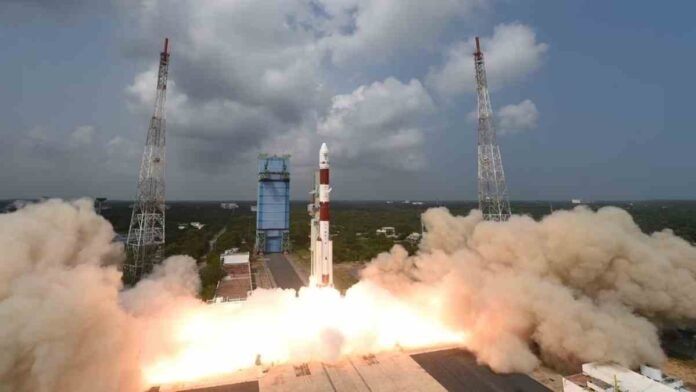A start-up situated in Bangalore Pixxel launched Anand, its third hyperspectral satellite, onto the PSLV in order to photograph our world in great detail and give environmental data.
With a PSLV-C54 rocket, the Indian Space Research Organisation (ISRO) launched the Earth Observation Satellite — Oceansat (EOS-06) and eight nano-satellites.
The presence of three nano-satellites manufactured by two Indian companies adds to the significance of this year’s last Polar Satellite Launch Vehicle (PSLV) mission.
Pixxel, a Bengaluru-based start-up, launched Anand, its third hyperspectral satellite, atop the PSLV. This is the first time the firm has launched on Indian soil.
This comes only a few days after the launch of India’s first privately produced rocket, Vikram-S, on November 18. Skyroot Aerospace Private Ltd, a Hyderabad-based firm, created it.
Dhruva Space, located in Hyderabad, also launched two Thybolt satellites. These are amateur (ham) radio communication nanosatellites designed to help radio enthusiasts all around the world.
Dhruva Space successfully tested and space-qualified its Satellite Orbital Deployer onboard the PSLV-C53 in June 2022.
Anand is a 15-kg satellite that will assist Pixxel in demonstrating its imaging and technological capabilities. It will observe our globe in great detail and offer environmental data in over 150 wavelengths.
The introduction of Anand is a significant win for Pixxel after a slew of hurdles. They faced eviction from their premises and various other setbacks after being in development for three years.
Pixxel, which was founded by Awais Ahmed and Kshitij Khandelwal, became the first Indian business to launch a commercial satellite, ‘Shakuntala,’ aboard Elon Musk’s SpaceX’s Falcon-9 rocket in April 2022.
The business “is a space data company, constructing a network of hyperspectral earth imaging satellites and the analytical tools to draw insights from that data,” according to the company’s website.
Instead of assigning main colours (red, green, blue) to each pixel, hyperspectral imaging analyses a broad spectrum of light. The light that strikes each pixel is then separated into numerous spectral bands to obtain more information about the image. Hyperspectral imaging collects information at hundreds of wavelengths.
Among other things, satellite imaging may be used to detect insect infestation, monitor crop health, map forest fires, and identify soil stress and oil spills.
In the future, the business plans to launch a network of hyperspectral satellites into orbit and harvest data from space.
This is the Polar Satellite Launch Vehicle’s 56th flight (PSLV). It is also the PSLV-XL version’s 24th flight.
The launch took place at 11:56 a.m. from the SatishDhawan Space Centre in Sriharikota.
The rocket’s primary cargo, a third-generation Oceansat satellite, was successfully detached at Orbit-1, according to ISRO. Others were also introduced into their respective orbits.
It took 8,271.36 seconds (slightly over two hours) to accomplish the mission. The mission’s goal is to maintain data continuity of ocean colour and wind vector data in order to continue operational applications.
Other client spacecraft include the ISRO Nano Satellite-2 for Bhutan (INS-2B), which contains two payloads, and four Spaceflight Astrocast satellites.



